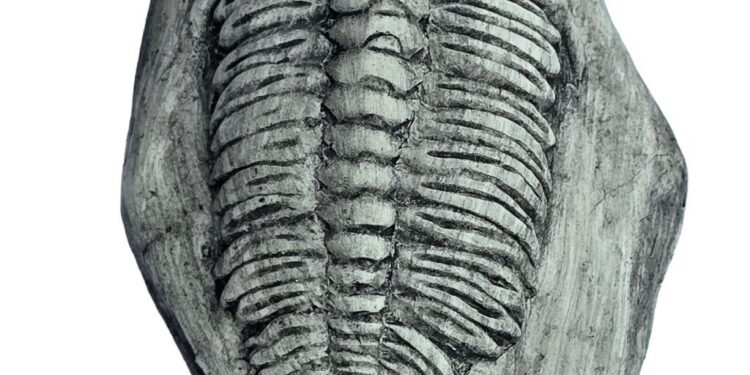New fossil discoveries are rewriting our understanding of the final days of the dinosaurs, revealing that these prehistoric giants were flourishing right up until the catastrophic asteroid impact that ended their reign. Recent findings reported by ZME Science challenge previous assumptions that dinosaur populations were in decline before the mass extinction event 66 million years ago. Instead, the new evidence suggests a vibrant and diverse ecosystem endured until the very last moments, shedding fresh light on one of Earth’s most dramatic turning points.
New Fossil Discoveries Challenge Previous Theories on Dinosaur Decline
Recent excavations in North America have unveiled an unprecedented trove of fossil evidence indicating that many dinosaur species were far from a gradual decline before the catastrophic asteroid impact. Contrary to longstanding beliefs, these findings suggest dinosaurs were flourishing up until the very end of the Cretaceous period, thriving in diverse ecosystems. Among the most striking discoveries are exceptionally well-preserved remains of herbivorous and carnivorous species, accompanied by signs of robust populations, including juvenile fossils, which hint at successful reproduction cycles mere tens of thousands of years before the mass extinction event.
These revelations are reshaping paleontological narratives by highlighting a sudden and dramatic collapse rather than a slow, inevitable downfall. Key data point to environmental stability and biodiversity, supported by:
- Multitude of species coexisting with varied diets and habitats
- Evidence of extensive nesting sites and juvenile fossils
- Geochemical markers aligning with normal climatic conditions prior to extinction
| Species | Fossils Found | Estimated Population Density |
|---|---|---|
| Tyrannosaurus rex | 12 | High |
| Triceratops | 18 | Moderate |
| Hadrosauridae | 25 | Very High |
Evidence Reveals Diverse and Thriving Dinosaur Populations Prior to Asteroid Impact
Recent paleontological discoveries have upended long-standing assumptions about the state of dinosaur populations before the catastrophic asteroid impact 66 million years ago. Contrary to the theory that dinosaurs were already in decline, new fossil evidence paints a picture of a diverse and abundant ecosystem, thriving with a variety of species. Researchers uncovered multiple fossil beds showing rich species diversity across different habitats, from lush coastal plains to inland forests. This suggests that dinosaur communities were not only surviving but evolving dynamically, adapting to their environments just before their sudden extinction.
Key highlights of the new findings include:
- Multiple new species identified in a single dig site, indicating ecosystem complexity.
- Bonebeds revealing well-preserved juvenile and adult dinosaurs, underscoring stable population structures.
- Evidence of varied diets and niches, suggesting robust food webs.
| Species Group | Estimated Population Density | Notable Adaptations |
|---|---|---|
| Theropods | High | Enhanced sensory capabilities |
| Hadrosaurs | Moderate | Efficient herbivory & complex social behavior |
| Ceratopsians | Low to Moderate | Protective frills and horns |
| Ankylosaurs | Stable | Armored bodies for defense |
These findings challenge the narrative that the asteroid impact was simply the final blow to dwindling dinosaur numbers. Instead, they highlight that the extinction was sudden and catastrophic, erasing a complex and thriving community virtually overnight. Understanding this vibrant pre-impact diversity deepens our insights into the fragility and vulnerability of even the most dominant species when faced with rapid environmental changes.
Scientists Urge Reevaluation of Extinction Models Based on Latest Fossil Findings
Recent discoveries from newly unearthed fossil sites challenge long-held assumptions about dinosaur populations in the period leading up to the Cretaceous-Paleogene extinction event. Contrary to the belief that dinosaur diversity was already in decline millions of years before the catastrophic asteroid impact, the latest fossil evidence indicates that several groups of dinosaurs were not only surviving but thriving. Scientists have identified an abundance of well-preserved skeletal remains spanning numerous species, suggesting ecosystems that were still robust and complex just prior to the impact.
These findings have prompted experts to call for a critical reassessment of current extinction models, which often emphasize a gradual decline caused by volcanic activity, climate change, or other environmental stresses. Instead, the data points toward a sudden and dramatic collapse triggered directly by the asteroid strike. Key points from the research include:
- High species diversity in multiple dinosaur clades up to 66 million years ago.
- Evidence of active reproduction and growth cycles indicating healthy populations.
- Rapid post-impact ecosystem collapse contrasting with earlier gradual decline theories.
| Dinosaur Group | Population Trend | Last Known Fossil Age (Mya) |
|---|---|---|
| Hadrosaurids | Stable / Increasing | 66.1 |
| Ceratopsians | Stable | 66.0 |
| Theropods | Stable / Increasing | 65.9 |
Insights and Conclusions
These groundbreaking fossil discoveries challenge the long-held perception that dinosaurs were already in decline before the catastrophic asteroid impact. Instead, the evidence paints a picture of diverse and thriving dinosaur populations up until the very end of the Cretaceous period. As researchers continue to unearth new data, our understanding of the final days of the dinosaurs-and the dramatic event that ended their reign-evolves, shedding fresh light on one of Earth’s most pivotal moments in natural history. Stay tuned to ZME Science for the latest updates on this unfolding story.































